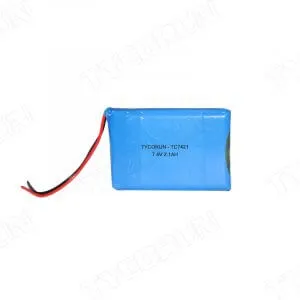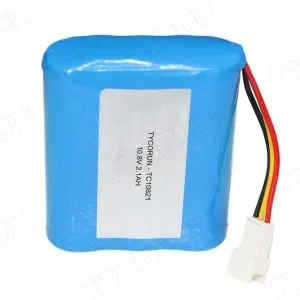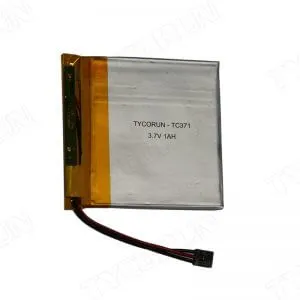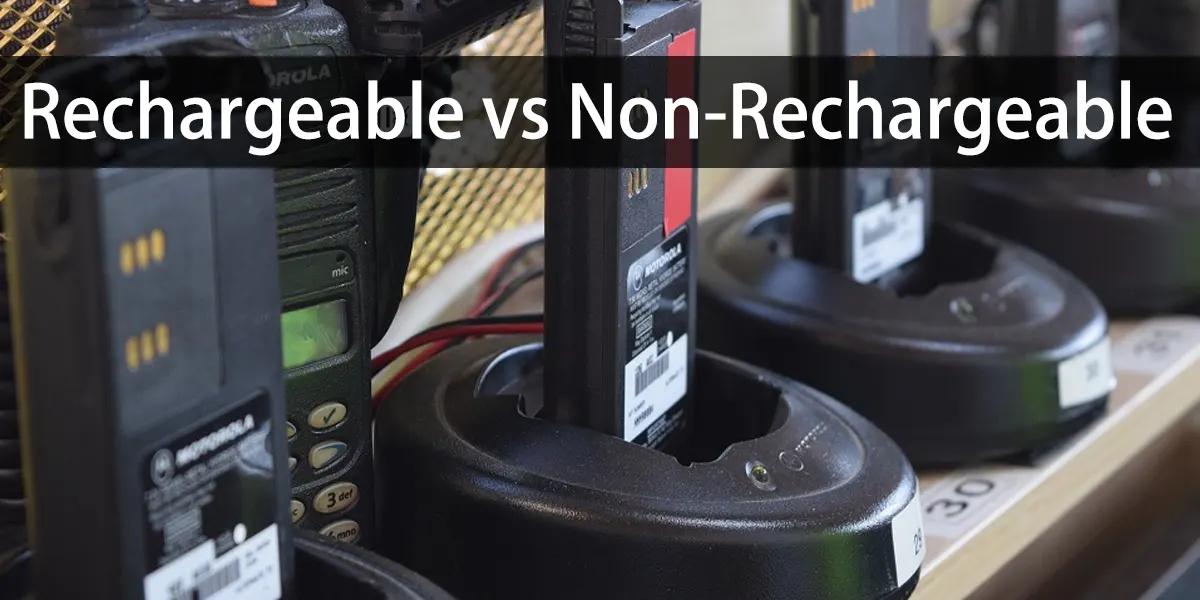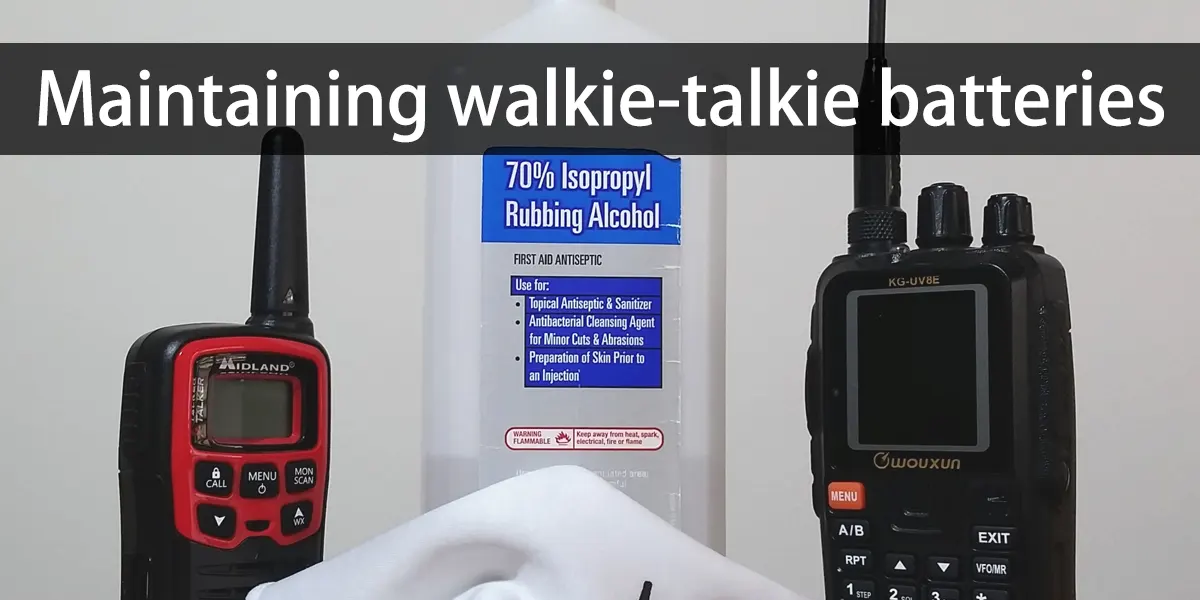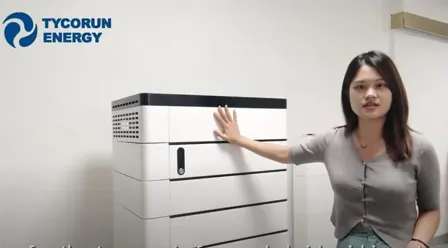Walkie talkie battery - types and factors to consider before choosing
Walkie talkie battery manufacturer
16-year professional lithium ion battery manufacturers, 10-year warranty on battery packs, using the best BMS protection board, protecting the lithium battery pack from overcharge, overdischarge, overcurrent, short circuit, etc, with excellent self-discharge rate. Configurable Bluetooth, can be connected in series and parallel. The heating function and other special functions can also be customized. Enough stock for the walkie talkie battery. Can be shipped within 3 days.

-
18650 lithium ion battery
7.4v 2.1ah 18650 battery 7.4 v lithium ion battery
Rated 0 out of 5Read more
Walkie talkie battery – types and factors to consider before choosing
- What is walkie talkie battery?
- What are the features of walkie talkie battery?
- Which battery is used in walkie talkie? Which is better?
- Basic parameters of common walkie-talkie batteries
- How many batteries do walkie-talkies need?
- How long do walkie talkie batteries last?
- Factors to consider when choosing a walkie talkie battery
- How do you change a battery in a walkie-talkie?
- How do I check my walkie talkie battery?
- Maintaining walkie talkie batteries
- Summary
- FAQs
Proper communication is vital to maintain safety and productivity in some professions, such as firefighters and police officers. Walkie-talkies are an essential tool that aids communication in situations where a normal transmission cannot work or is not available.

In this case, having a replaceable battery for your walkie-talkies becomes an integral part of this tool, ensuring it works in all conditions.However, choosing the right walkie talkie battery is vital in ensuring efficient and safe communications.
This article will explain the types of walkie-talkie batteries and their distinct features. These parameters affect battery performance and life and guide choosing and using a replacement walkie talkie battery.
What is walkie talkie battery?
A walkie talkie battery acts as the power supply for the device, allowing it to broadcast and receive messages wirelessly. This handheld device can communicate with other portable radios at the same frequency. The battery is one of the central elements in any walkie-talkie since these devices cannot work without it.
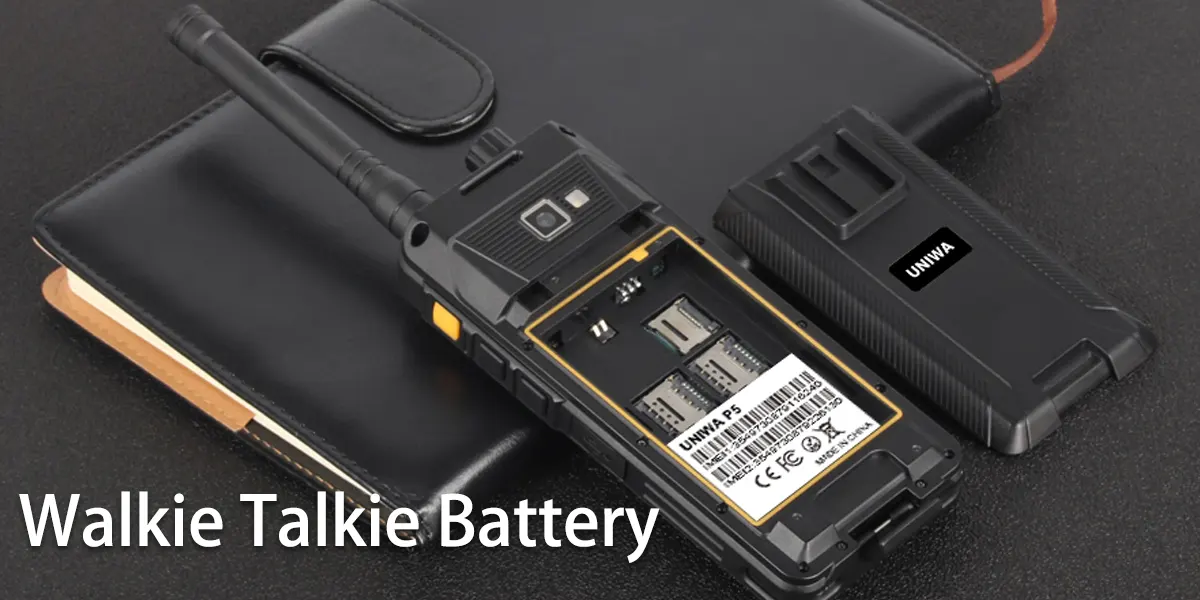
The frequency of use, transmission power, environmental factors, and maintenance practices are other important factors that affect how long a walkie talkie battery lasts. Generally, a walkie talkie battery ranges from several hours to several days per charge.
What are the features of walkie talkie battery?
Walkie-talkie batteries are essential components for handheld communication devices that are commonly used in various industries, including security, construction, and hospitality. Here are some of their features:
● Battery capacity: The walkie talkie battery typically has a capacity of 1000 to 2000 mah. This is because walkie-talkies are designed to be portable and compact, limiting the battery capacity.
● Battery types: There are three main types of batteries for walkie-talkies: nickel-cadmium, NiMH batteries, and lithium-ion. Each type has its advantages and disadvantages, making it essential to weigh the pros and cons before making a choice.
● Size: Walkie-talkies are handheld communication devices designed for short-range communication. The batteries used in walkie-talkies are usually relatively small to maintain their portability and lightweight.
Which battery is used in walkie talkie? Which is better?
Different manufacturers use different types of battery compositions for their walkie-talkies. The type of walkie talkie battery suitable for your device can be either lithium, NiMH, or nickel-cadmium. Different batteries require a different approach to storage, charging, and other maintenance activities. Below are the most common types of batteries for walkie-talkies:
NiMH batteries
NiMH battery can be used as a walkie-talkie battery and it consists of a cathode (negative electrode) made of a hydrogen-absorbing alloy or various intermetallic compounds. The anode (positive electrode) in this kind of walkie-talkie batteries is made of nickel oxide hydroxide. Ni-MH batteries are considered to be harmless to the environment. This battery has a higher capacity than nickel-cadmium batteries of the same size, with up to a 20% increase.
The disadvantages of a NiMH walkie talkie battery include a significant loss of capacity with a decrease in ambient temperature. Batteries of this sort are essentially unusable at temperatures below -20°.
Still, their service life is only 500 charge/discharge cycles, which is a much shorter period than that of nickel-cadmium and lithium ion batteries. Also, it self-discharge rate is about 30% per month.
Nickel-cadmium batteries
Nickel-cadmium batteries use nickel oxide hydroxide, cadmium metal electrodes, and an alkaline potassium hydroxide electrolyte.They are characterized by a high storage time and stability at temperatures down to -40 degrees Celsius. This allows you to use devices with such batteries even in extremely frosty conditions.
The cycle periods of NiCd batteries are slightly longer than those of NiMH batteries. On average, the service life of a Ni-Cd battery is up to 900-1000 charge/discharge cycles.
Nickel-cadmium batteries also have disadvantages. It also has a relatively high self-discharge rate, about 20% per month. Second, the memory effect is particularly serious. If the battery is not fully charged after each use. It will memorize only the maximum value of the remaining power last time, which will shorten the service life of the battery.
Lithium ion Battery
Due to its high energy density and lengthy cycle life, lithium ion battery is currently one of the most widely used options for powering portable electric device.
Lithium battery technology is more established and dependable than other battery types like nickel-cadmium and NiMH batteries. They are more suitable for long-term storage since their self discharge rate are only about 3% per month. They are also relatively unpretentious in maintenance because they do not have a “memory effect” .
The high energy density of lithium batteries also allows them to store more energy than other battery types while remaining the same size and weight. For instance, now the energy density of ternary lithium battery can reach 300wh/L. Thus, they have gained popularity in walkie-talkie batteries because to their compact and lightweight form.
Despite these benefits, there are still certain drawbacks to using lithium-ion walkie-talkie batteries. Batteries may be harmed by high input voltage and overheating if not utilized properly. In addition, compared to other batteries, lithium-ion batteries are more expensive.
Basic parameters of common walkie-talkie batteries
| Walkie-Talkie | Battery Type | Capacity (Ah) | Voltage (V) | C-rate | Internal resistance (Ω) | Cycle life |
|---|---|---|---|---|---|---|
| Midland BATT3R BATT-3R | NiMH | 0.7 | 6 | 0.5C | 0.2 | >400 |
| Motorola CP150 NiCd Radio | Nickel-Cadmium | 1.1 | 7.5 | 0.5C | 0.1 | >600 |
| Motorola 53615 m53615 KEBT-071A | NiMH | 1 | 3.6 | 0.5C | 0.15 | >500 |
| Motorola PMNN4077C | Lithium ion | 2.6 | 7.4 | 0.5C | 0.2 | 1500 |
How many batteries do walkie-talkies need?
The type and model of the walkie-talkie determine how many batteries the device needs. While some walkie-talkies utilize disposable batteries like AA or AAA, others use rechargeable batteries that are either built into or replaceable. The actual demand of the walkie-talkie will affect the choice of battery voltage and capacity.
The power a walkie-talkie requires and how long it can work determine how many batteries are needed. A walkie-talkie powered by 4 alkaline batteries vs. a 3.7V Li-ion cell is one example to think about. The former can run for up to 10 hours nonstop, and the latter can work up to 20 hours. In addition, since the alkaline battery is a disposable battery, it needs to be replaced after ten hours of use. The lithium-ion battery can be used again after being charged.
The intricacy of the walkie-talkie’s features, such as the backlight, keypad lock, call reminder, etc., will also influence influence how much battery is required. You can check device’s specs or user manual to see how many batteries your walkie-talkie requires. The walkie-talkie’s battery compartment or battery indicator will show you what kind and size of batteries it uses.
How long do walkie talkie batteries last?
How long your walkie-talkie battery last often depends on the type and quality of its battery. The lifespan of a walkie-talkie battery is significantly influenced by some other elements, including its features and functionalities, charging and storage conditions, usage frequency, and duration.
Batteries for walkie-talkies usually last 18 to 24 months on average. Although this depends on certain variables, some batteries may last longer or shorter.
Factors to consider when choosing a walkie talkie battery
There are various factors to consider while choosing a battery for walkie-talkie. How can you then choose the walkie-talkie battery that will better serve you?
The following will introduce you to some aspects that need to be considered when choosing a walkie-talkie battery:
Battery capacity
The capacity is one of the most crucial factors to consider and examine when purchasing a walkie-talkie battery or other electronic device batteries.
The higher your battery’s capacity, the longer it will last before you need to replace it or recharge it suppose it is rechargeable. If you intend to use walkie-talkies for long periods, you should seek models with high capacity. But bear in mind that a larger capacity may also result in a higher battery cost and bigger battery size.
Battery life
Battery life measures how long a walkie-talkie battery can operate without recharging or replacement. The time you can converse on walkie-talkie without interruption depends on the battery life. The amount and frequency of battery charges or replacements, as well as how dependable and practical your walkie-talkie will be, are all influenced by battery life.
At present, the lithium battery is the battery with a higher cycle number in the market under the condition of DOD80%, which also means that the battery life is longer.Lithium batteries might fulfill your needs if you have specifications for the battery’s durability.
Rechargeable vs non-rechargeable
Rechargeable and non-rechargeable are two different types of batteries used in walkie-talkies. Some walkie-talkies use non-recharge batteries, but weighing the advantages and disadvantages of both battery types before selecting one as your walkie-talkies battery would be best.
Batteries that may be recharged and used repeatedly after being purchased are known as rechargeable batteries. Lithium batteries are frequently regarded as among the best rechargeable batteries.
But rechargeable batteries cost more upfront. In the long term, rechargeable batteries are more economical and environmentally good since they eliminate the need to acquire and dispose of new batteries routinely.
Non-Rechargeable walkie-talkie battery types are initially less expensive and more widely available, but they are also more environmentally unfriendly and wasteful since they produce more pollution and waste. Also, they need to be replaced more frequently, which can be expensive over time and inconvenient.
Your usage and preferences will determine the best battery for your walkie-talkie. It is advised that you acquire a rechargeable battery if you want to use it regularly or for extended periods. This will help you save money and avoid unnecessary stress in the long term.
A non-rechargeable battery may be preferable if you just sometimes or infrequently use your walkie-talkie because it can initially last longer and is simpler to locate and replace. Either way, it is important to weigh your options with both and consider this option when looking to choose walkie-talkie battery.
How do you change a battery in a walkie-talkie?
Depending on the brand and kind of battery you have, changing a walkie-talkie battery is a straightforward procedure following some general guidelines:
● To start, you must find the walkie-talkie’s battery compartment. It is often on the device’s back or bottom, and it could include a latch or a screw that has to be opened or taken out.
● After that, remove the old battery from the container. It could be necessary to carefully detach, slide, or unplug it from a connection to avoid damaging the batteries, walkie-talkie, or its wiring or contacts.
● You can then place the new battery inside the compartment, ensuring it fits tightly and is properly oriented. You may need to plug it into a connector or secure it with a clip. Do not force the battery into place or bend the wires or contacts.
● The battery compartment must then be sealed and fastened with a latch or screw. You could also want to verify the battery’s condition by turning on your walkie-talkie.
How do I check my walkie talkie battery?
Checking walkie-talkie battery is vital to ensure your device has enough power to communicate and function properly. You can do this by turning on your walkie-talkie and finding the battery indicator on the display or the LED light on the device.
The battery indicator may show the percentage or level of the battery charge or change color or blink depending on the battery status. The LED light may also change color or blink to indicate a low or high battery. Check the user manual of your walkie-talkie to understand what the battery indicator or LED light means for your model.
Another way to check your walkie-talkie battery is by listening to the device for any beeping sounds or voice alerts. Some walkie-talkies may beep or announce the battery status periodically or when the battery is low.
Maintaining walkie talkie batteries
In order for walkie-talkie batteries to function properly and endure a long time, maintenance is necessary. In addition, proper care may stop environmental harm and safety risks brought on by defective or outdated batteries. Below are some elements of walkie-talkie battery maintenance.
Proper charging
walkie-talkie battery’s life and performance can be improved by properly charging it. Use the appropriate original or compatible battery charger for your battery type and model, and adhere to the manufacturer’s recommendations for charging and storing your battery.
Overcharging or undercharging can harm a battery’s internal components and reduce its capacity. Maintaining a modest amount of charge (between 40% and 60%) when not in use and charging your battery on a regular basis are best practices.
Storage and temperature
You can stop walkie-talkie battery from degrading or malfunctioning by keeping it in an appropriate climate. It is advised to keep battery in a cool, dry, well-ventilated place with low humidity levels (no higher than 75%) in order to preserve its longevity. A temperature range of 20°C to 25°C is best for storage.
Batteries should be stored securely, away from heat sources, fire, water, dust, acid, and other corrosive substances. Battery overdischarge or self-discharge can occur if left unused for an extended period. It is advised to check and recharge your battery every two to three months, depending on how long you want to keep it.
Regular use and maintenance
Using and maintaining your walkie-talkie battery frequently can keep it in good condition and prevent it from losing its performance. Avoid using your battery at temperatures above or below its recommended working range (between -20°C and 60°C), which might interfere with its chemical processes.
You should also monitor your battery level and replace or recharge it when it is low, or you notice any signs of poor performance or quality. Using a soft cloth or cotton swab, you should also clean the battery connections and terminals to remove any corrosion or debris that can affect the power supply.
Summary
The walkie-talkie system relies on batteries to supply power for proper performance during communication. Several factors impact the quality and suitability of various walkie-talkie models. Walkie-talkie batteries should be carefully selected based on the user’s preferences and usage. We discussed how you’d choose a walkie-talkie battery and care for the one you already have.
FAQs
Can I Use Different Types of Batteries in a Walkie-Talkie?
Whether you can use different batteries depends on the model and compatibility of your walkie-talkie and the battery type. You should always use the original or compatible battery type for your walkie-talkie model and check the compatibility before using them. While some models may let you interchange batteries freely, using different types of batteries on other models may cause problems or risks.
How Often Should I Replace a Walkie-Talkie Battery?
Depending on how you use it and its condition, you should change your walkie-talkie battery every 13 to 25 months. Since they last between 1 and 2 years of use, you can keep track of the day you first used it. In addition, if you detect any deterioration or subpar performance, you should replace your battery.
How To Properly Dispose of a Walkie-Talkie Battery?
A walkie-talkie battery should be recycled at a specified drop-off location, pickup service, or mail-in program..Therefore, it is advisable to dispose of batteries through proper means.
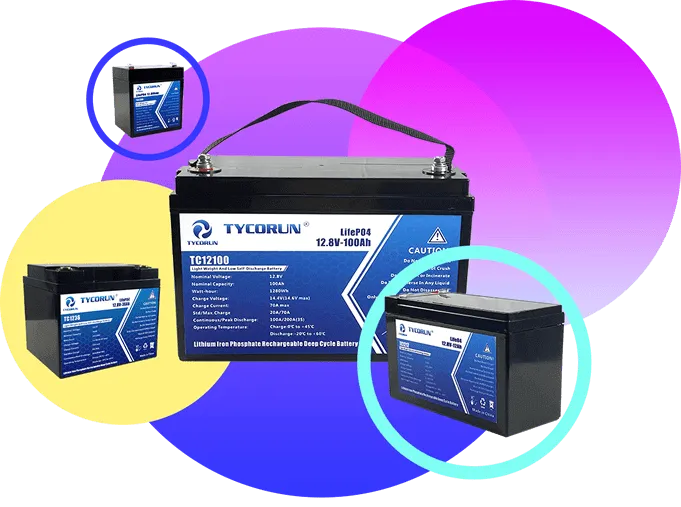
About lithium ion battery manufacturers
TYCORUN® has more than 16 years of experience in the lithium battery industry and is a Chinese high-tech enterprise that develops, produces and sells various new energy battery products.
Walkie talkie battery production capacity accounts for 80% of our lithium battery manufacturing products
High quality assurance
TYCORUN is determined to become a leader in the lithium battery industry, quality is our culture!
Professional manufacturers
With lithium ion battery pack as the core, integrating channels and technologies
Factory wholesale price
We promise to let customers get the most cost-effective lithium battery products
Reliable Service Assurance
Provide lithium ion battery OEM, ODM, 1 MOQ.Full Set of Certificate
Video Gallery
Lithium ion Battery News

One-stop Africa battery swap solution – new energy electric motorcycle intelligent operation management
This article will cover the current situation of Africa’s market, the rapid development of the Africa battery swap industrial chain and Tycorun’s battery swap solution.

Top 6 high-rate cell companies in China
Among the manufacturer producing high rate battery, BAK, EVE, LISHEN, MOLICEL, SAMSUNG SDI, and SunPower stand out for their outstanding products.

Top 10 solid state battery manufacturers in China
China’s solid state battery development is in the accelerated stage, the top 10 solid state battery manufacturers mainly have the following

New Ganfeng battery – ultra safe semi-solid battery with high performance
This article details Ganfeng Lithium’s solid-state battery development, technological innovations, and the performance of the ganfeng battery in safety tests.

Top 5 electric cargo tricycle in China
This review presents the top 5 electric cargo tricycles in China, featuring detailed specifications and performance insights. Evaluating criteria such as load capacity, battery efficiency, and safety features, this guide assists buyers in selecting the ideal tricycle based on individual requirements.
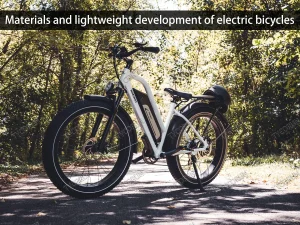
Materials and lightweight development of electric bicycles
This article provides an insightful exploration into the development of electric bicycles, focusing on advancements in materials and lightweighting techniques. It delves into the historical evolution of electric bicycles, analyzes various bicycle frame materials, discusses the development of electric power assist technology, and offers an overview of the electric assist bicycle market. Through detailed examination and analysis, it highlights the importance of lightweighting for electric bicycles and identifies key trends shaping the industry’s future.


